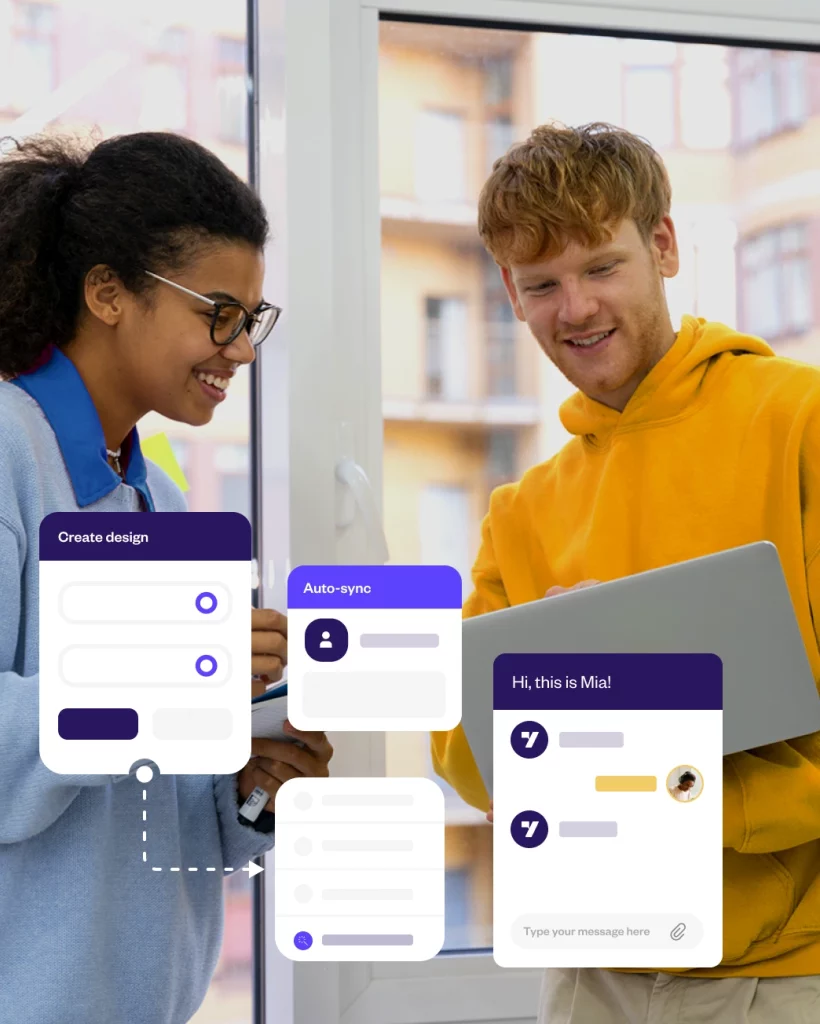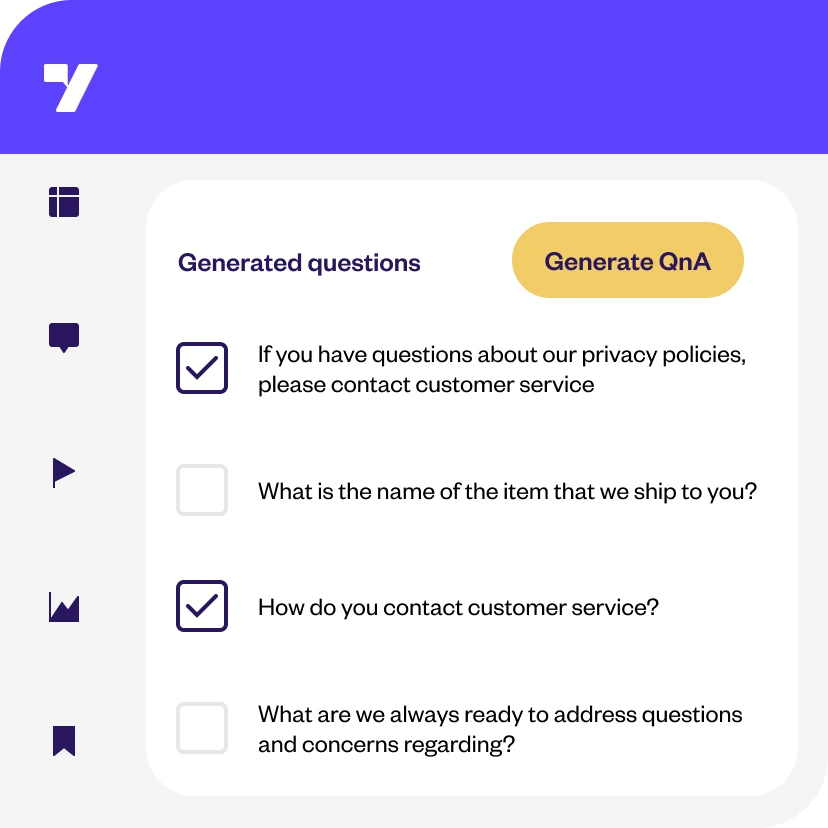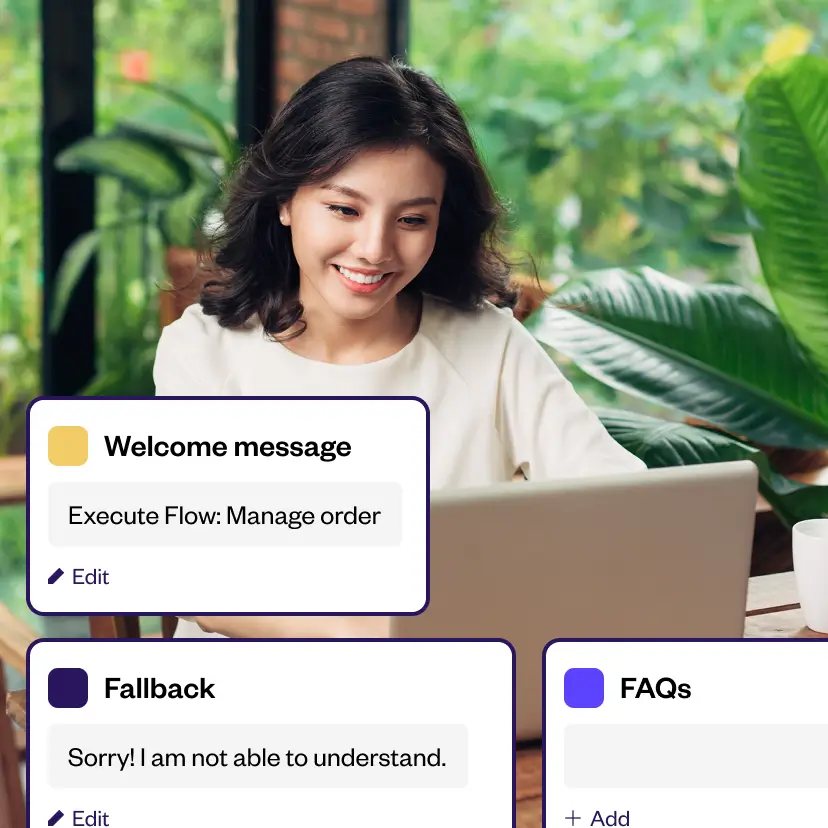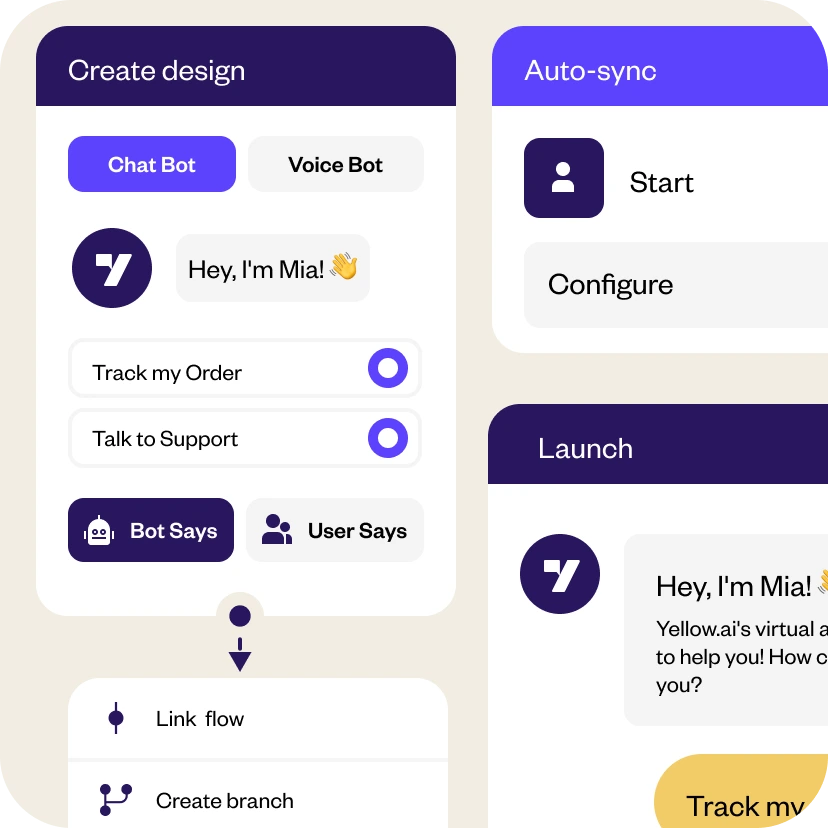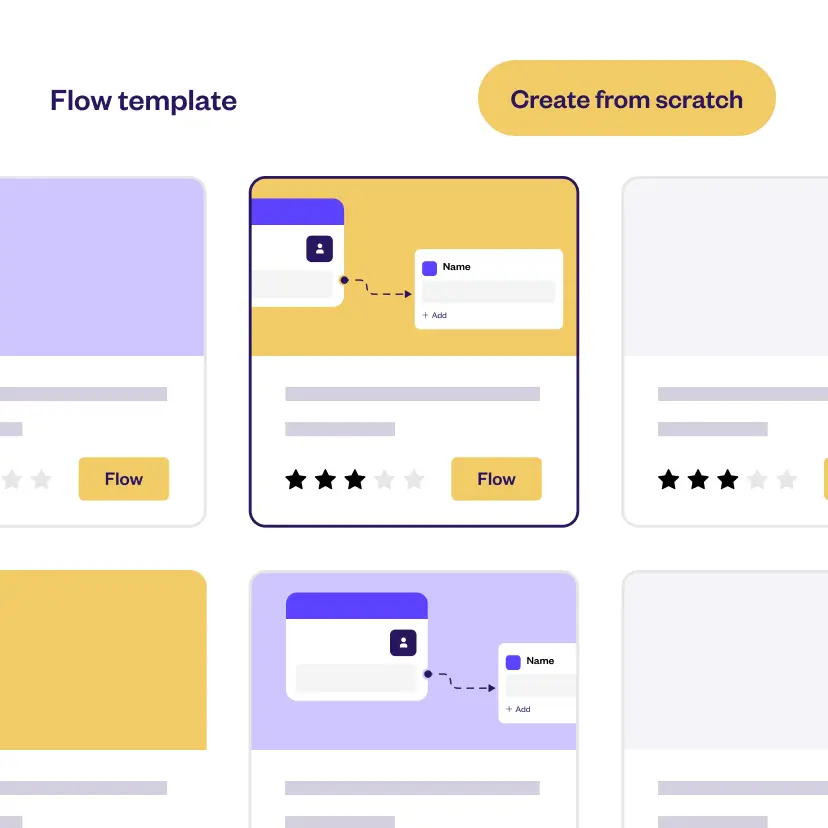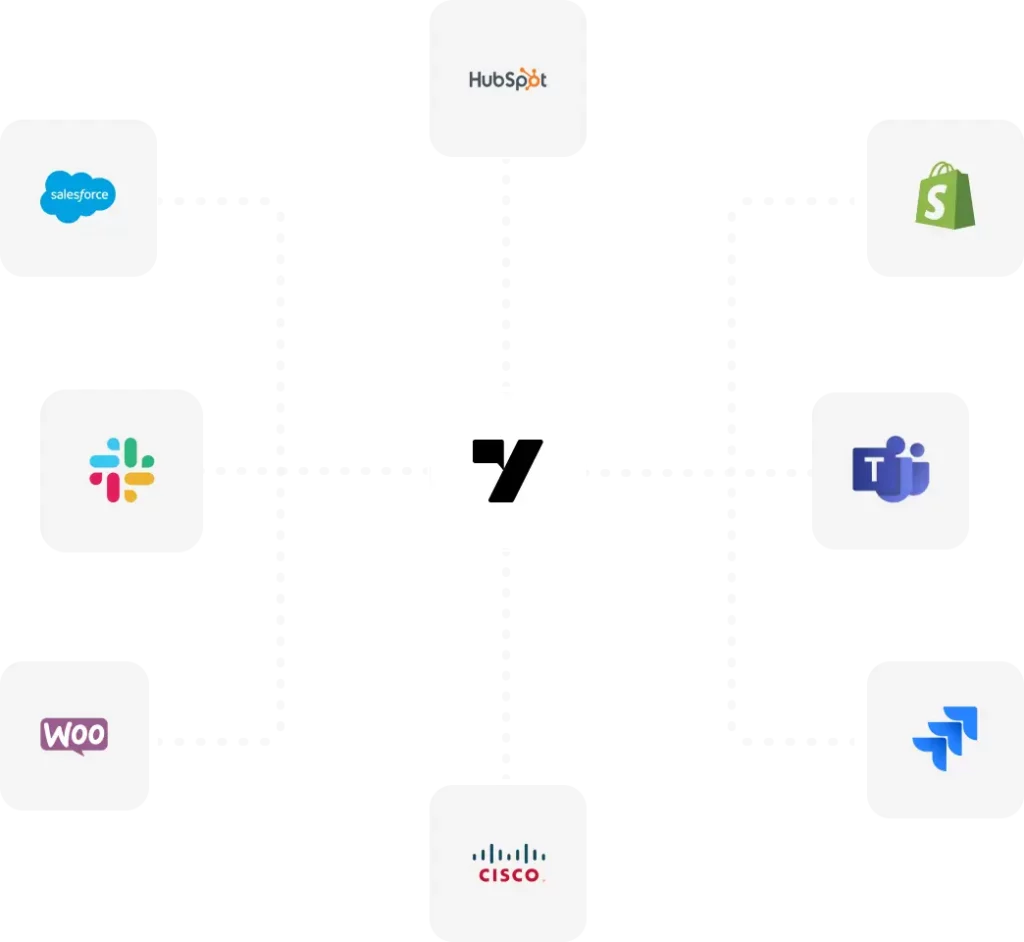AI analytics
Yellow.ai + Zendesk
Revolutionize Customer Service with Yellow.ai & Zendesk Sunshine Conversations
Yellow.ai + Genesys
Transform contact center operations with Yellow.ai and Genesys
Yellow.ai + Freshdesk
Drive powerful customer & employee experiences with Yellow.ai & Freshworks
Yellow.ai + HubSpot
Turn your leads into loyal customers with Yellow.ai and Hubspot
















